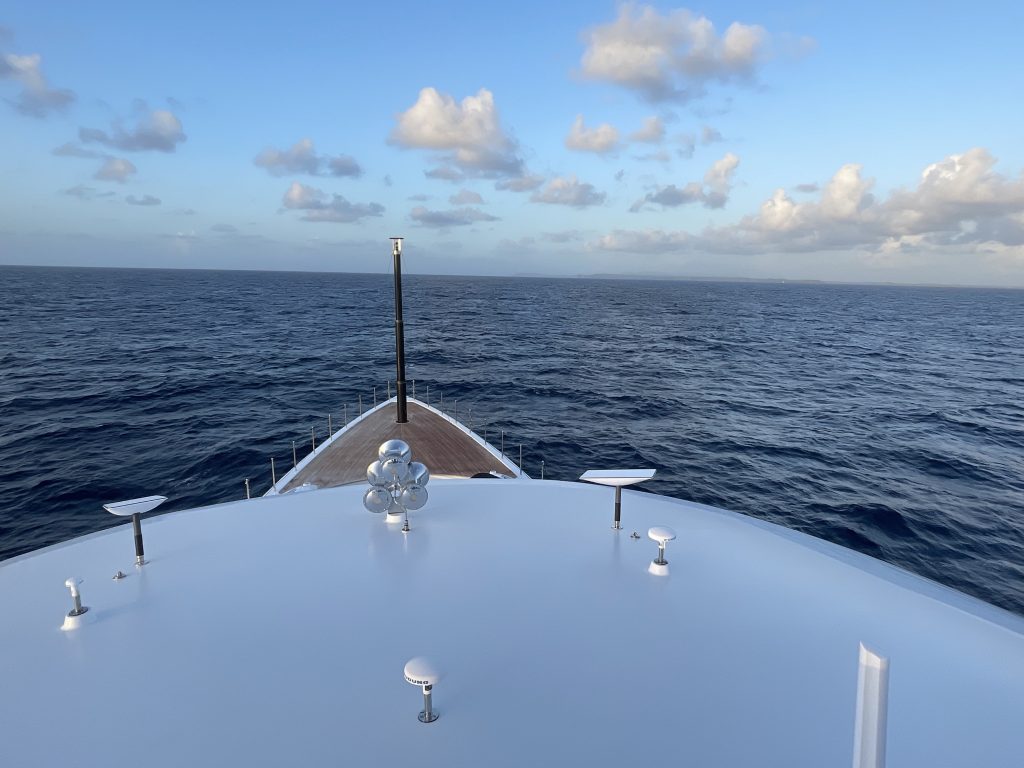
Having just completed a transatlantic sailing on board the 66 metre superyacht Triumph we witnessed first-hand how the new Starlink satellites from Elon Musks SpaceX system are changing the way superyachts communicate. The high-tech network platform provided us with fast, reliable internet service as we crossed to Antigua from the Mediterranean.
Triumph launched at the Benetti shipyard last year is one of the first superyachts to install Starlink and carries them alongside her impressive VSAT system. As yet, the fully marinised version is not available and Triumph like others trailing Starlink is equipped with antennae designed to be fitted to large recreational vehicles. Despite this, we witnessed how fast and reliable the platform was and we along with the yachts crew of 17 were able to enjoy almost trouble free communication as we made the crossing.

Captain Sean Read, Master of Triumph is in no doubt as to the potential Starlink has to become a game changer. He said “It is a already becoming massive disrupter among existing SATCOM networks and with prices 50% lower than traditional satcoms it is set to revolutionise the way our owner and his charter guests can use the yacht. He added “many clients now conduct business on board, as if they were at home.” Fergus Meek, the yachts chief engineer, believes that with promise of eventual global coverage Stalink is in a good position to become a superyacht essential piece of kit
Made up of thousands of small satellites orbiting the Earth at an altitude of about 340 miles, the Starlink system provides internet service to around 40 countries. While we were making the crossing, we experienced Triumph receive consistent download speeds of 150 to 200 mbps, compared to a maximum 80 mbps provided by, the yacht’s VSAT contractor.

Low Earth Orbit (LEO) satellite network such as Starlink have several advantages over competitors in the much higher-flying GEO networks, which typically orbit at an altitude of 22,000 miles above Earth.
LEO satellites fly at a much faster pace and because of their proximity to Earth they are able to provide a faster and more reliable connective service.
Designed to provide connectivity to even the most remote areas of the planet, Starlink is ideal for vessels transiting high-latitude areas like the Arctic circle.

Starlink claims its system will withstand “extreme cold, heat, hail, sleet, heavy rain and gale force winds,”
With Starlink still in its infancy Captain Read has no intention of ditching his VSAT supplier anytime soon, he believes that come the time full global maritime reach is achieved and marinised antennae become available it is only a matter of time before Triumph and other superyachts switch completely to Starlink.
